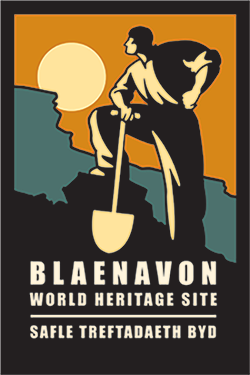Iron, coal, hard work and ingenuity
World Heritage Site Status
Blaenavon Industrial Landscape was inscribed as a World Heritage Site by UNESCO in 2000 in recognition of the exceptional testimony to the dynamic forces that drove the Industrial Revolution that is told through the areas heritage assets.
Major sites such as Blaenavon Ironworks and Big Pit, together with the wider landscape with its relicts of mineral exploitation, manufacturing, transport and settlements together tell the story of the iron and coal industry that was pre-eminent in south Wales in the 19th century.
The ironworks, which dates back to 1789, includes 18th and 19th century furnaces, casting houses, calcining kilns, workers cottages and the iconic water balance that dates back to 1839. Meanwhile, Big Pit, the last deep mine in the area, presents visitors with a unique tour through the underground workings, as well as allowing them to explore the surface buildings. Both of these sites are set within a landscape that provided all the materials needed for iron production – the coal, iron ore, fireclay for bricks and limestone, all of which were transported across the hillsides on a primitive iron-railed railway which also connected the works to the canal and form there, the rest of the world.
At the same time, the town and the reminders of lost communities across the hillsides, tell the story of the people who drove the industrial revolution. The investors, who risked their money in starting the iron industry in the area, the workers who brought skills as well as physical labour to develop the industries, and those who took those lessons with then as they left in search of new challenges, establishing industry across the world. Blaenavon town has notable buildings such as St. Peter’s Church, built by the ironmasters in 1804; the Blaenavon Workmen’s Hall, built by workers’ subscriptions in 1894; and St. Peter’s School, built by the ironmaster’s sister, Sarah Hopkins, in 1816.
Taking all of these authentic elements together, and it is easy to see how this is one of the prime areas in the world where the full social, economic and technological process of industrialisation through iron and coal production can be studied and understood. If you’d like to discover more about why Blaenavon was awarded World Heritage Status in 2000 then take a look at the full Nomination Document or take a look at the UNESCO website.
The conservation and management of World Heritage Sites is vital to their future. You can discover how Blaenavon Industrial Landscape is managed in this section, as well as how you can get involved with the future of this important site.








